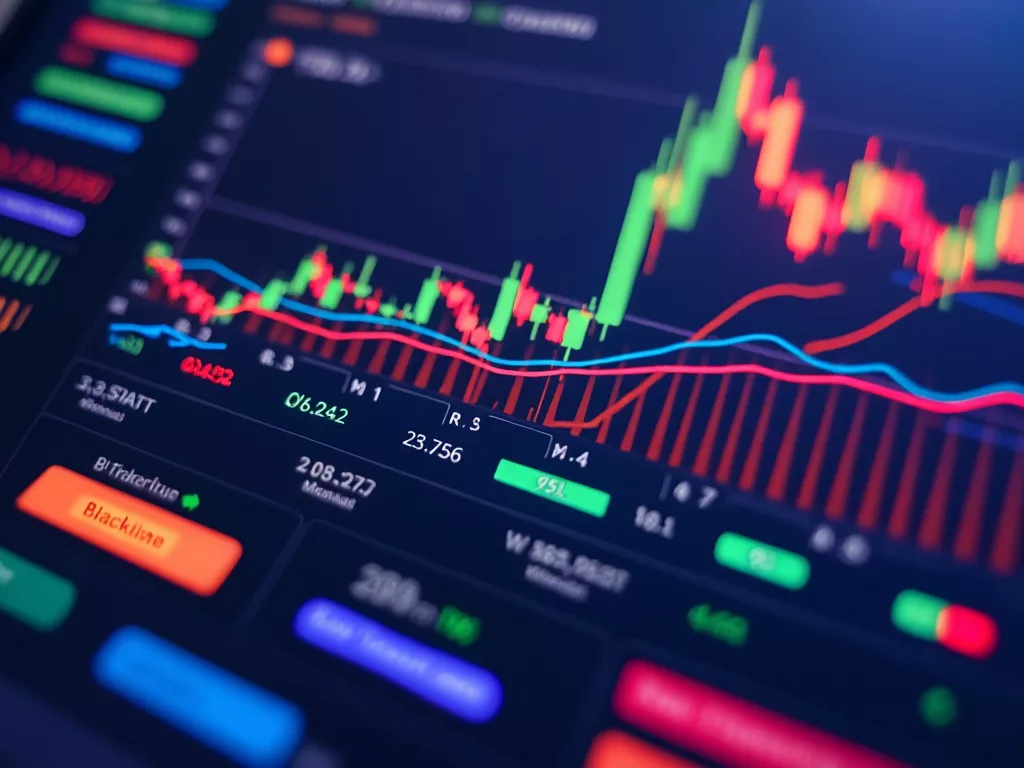
Any trader who wants to trade efficiently and effectively should have liquidity in trading markets. This means how easily an asset can be bought or sold in the market without impacting the price much. In a high liquidity environment, the transaction of positions can be done with minimal friction and therefore very fast with predictable cost. In volatile markets, a trader’s success depends on quick decision-making, and this predictability makes it possible.
For traders, this offers some protection against price slippage (the gap between the amount you expected to pay for a trade and the amount you actually did), especially for those who are making large trades. Bid spreads—the distance between the highest point a buyer is ready to pay and the lowest point that a seller is willing to take—are narrower in a more liquid market and reflect the presence of competitive pricing and a lower cost of execution to the trader. It is necessary to get the most out of returns with the least costs.
To understand and analyze liquidity in an exchange, it is necessary to consider many different key metrics that can tell us something about the ease and cost efficiency of trading. Order book depth, bid ask spreads, trading volume, and transaction speeds are among others.
The term liquidity in trading refers to how fast an asset can be traded in the market and at stable prices. This is a very important factor because it has an effect on the trader’s ability to buy or sell an asset without making a large change in its price. Typically, exchanges with high liquidity have lower price volatility and a narrower bid ask spread. Thus creating a better overall trading experience.
Furthermore, liquidity availability affects trading costs such as the bid ask spread as well as the slippage cost in the execution. For example, a liquid market leads to reduced transaction friction, which facilitates better execution times and prices and ultimately makes trading risk manageable and an efficient use of a trader’s trading strategy.
An order book is a real-time electronic list of orders to buy and sell an asset, ordered by price level. But it plays a major role in deciding liquidity as it shows the current market supply and demand dynamics. Order book depth just means the volume of buy and sell orders at various prices. This increases liquidity since it means deeper order book — a greater number of orders for a given price. The bigger the order book size, the more it stabilizes the market, less likely to be turbocharged by a big buying or selling event. This means trades can be executed at expected prices and have little impact on market prices in its entirety.
The bid-ask spread is simply a term for the range between the highest price that buyers are willing to pay (bid) and the lowest price that sellers are willing to accept (ask). As a matter of fact, the smaller the spread, the more liquid the market. The narrower the bid-ask spread, the more active participation by the buyers and sellers, thus lowering transaction cost. Of course, a wider spread can suggest lower liquidity since it means traders may have to incur higher costs to enter or exit positions.
Trade volume is how many shares (or contracts or lots) traded over a certain period. For instance, it acts as an important indicator of liquidity: the higher the number of trades, the more liquid a market is, the more active a market. A big volume means that a lot of people are buying and selling, and that is good both for making trades quickly as well as for stable prices. Trading volume trends can give us a clue of how the market sentiment felt so far and what to expect next.
Slippage is a term that refers to the difference between the price at which you expect to execute a trade and the price at which you are actually executed. Slippage is something you really need to understand, especially when it comes to market orders, which get executed at the best available price. Slippage can be exacerbated by high or low liquidity or high volatility. Traders should use strategies: limit order size, not trade until high liquidity, and limit order versus market order to minimize its impact.
The liquid nature of a coin or of any token is judged on the basis of deposit and withdrawal process speed and reliability. These operations can lead to a liquidity bottleneck, delaying a trader’s ability to get funds into and out of the exchange quickly. This helps increase the number of times that traders come to the market and thus increases market liquidity. On the other hand, high withdrawal and deposit times can discourage traders from using an exchange, which means transaction and liquidity of a market can decrease.
Traders have a lot of analytical tools and resources to effectively monitor exchange liquidity. TradingView and Coinigy, just to name a couple, offer real-time data on price movement, trading volume and order book depth, giving traders a chance to visualize the current state of the market. Furthermore, centralised platforms like CoinMarketCap and CryptoCompare also present liquidity metrics for various exchanges from which users can make informed decisions about where to trade.
Also, Bloomberg Terminal comes with additional analytics on bid-ask spreads and trading volumes, which are important measures of liquidity. With these tools, traders can refine their strategies, optimize the entry and exit points, and enhance trading performance.
Artificial intelligence (AI) can tremendously improve liquidity evaluations by accessing large amounts of market data to find patterns and trends that might not be obvious in a conventional evaluation process. Real-time insights on liquidity conditions, price movement prediction, and trade execution strategy optimization based on current liquidity levels can be provided by AI-powered tools.
Extending with AI tools in trade strategies may help traders adapt quickly to changing market conditions, resulting in better outcomes. Tools that optimize cash forecasting through AI can also assist in evaluating exchange liquidity, as they analyze expected cash flows related to trades and potential liquidity needs. The holistic approach to trading with data allows traders to make data-driven decisions, minimize risk, and maximize potential returns.
Traders looking for maximum performance need to choose the right exchange. When checking exchange liquidity metrics, traders must look at order book depth, bid-ask spread, and trading volumes. Liquidity on exchanges that repeatedly display tight spreads and large trading volumes is healthier and allows traders to execute orders with minimal price impact.
In the context of the best crypto exchanges in Canada, it’s essential to analyze individual features such as transaction speed, user experience, and customer support alongside liquidity metrics. Competitive liquidity features are offered by platforms such as Binance, Kraken, and Bitbuy and make them preferable choices for Canadian traders. To experience smooth trading, it is more likely that your exchange has robust liquidity allowing smooth trading, particularly during market fluctuations.
Conclusion
Traders wishing to execute successful trades need to evaluate exchange liquidity. Key liquidity metrics are understood by traders to enable informed decisions, lowered costs, and better strategies. Traders must be able to keep an eye on market conditions and adjust their approaches to trading to keep up with ever changing liquidity requirements in dynamic trading world. Understanding of liquid markets can facilitate better execution and perhaps yield higher profits—and that’s why these evaluations are critical to have in a trader’s regular routine.




Get the latest Crypto & Blockchain News in your inbox.